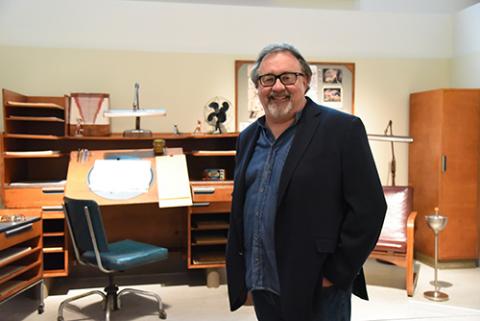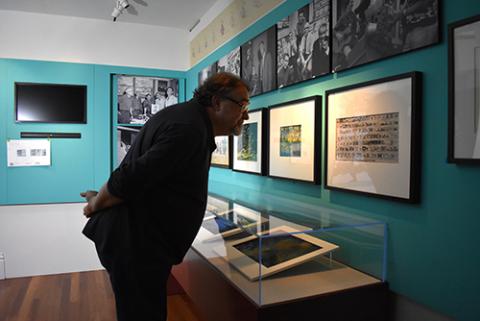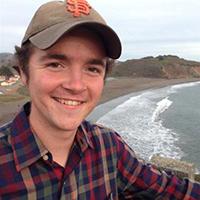
Veteran Disney producer and Walt Disney Family Museum Advisory Board member Don Hahn has recently completed work as Curator of our newest special exhibition, Walt Disney’s Nine Old Men: Masters of Animation.
Historian Lucas O. Seastrom sat down with Don to look back on the experience of putting the show together.
This is part one of a two-part conversation.
Lucas O. Seastrom: The Nine Old Men have received a lot of attention over the years, but they had yet to be treated to a comprehensive exhibition on this scale. With so much to cover, where did you start?
Don Hahn: It’s probably a fool’s errand to try to mount a show about any nine artists, much less a group of nine animators whose very art form involves looking at hundreds of thousands of drawings. When Ron Miller called and asked if I would take this on, I was excited for the challenge, and especially excited for the opportunity to pay tribute to these guys who meant so much not only to me personally but to the audiences who never really knew their names.
The first step was to go to the families and see what they had in their family archives. What I found was some Disney art and memorabilia, but then an astonishing amount of fantastic personal art in the form of paintings, drawings, and sculptures that these guys did on their own time away from The Walt Disney Studios. I had to have these pieces because the real story here was to reveal the men behind the curtain at Disney.
For many years Walt was the face of the Studios, but by the time Sleeping Beauty (1959) came around, he saw the need to open the doors of the Studios and share the process, art, and people who made it happen. The book Walt Disney: The Art of Animation by Bob Thomas was probably the first time those anonymous artists were made public. But that book was published 60 years ago.
So in this exhibit, I certainly wanted to expose the artists as the Disney masters that they were, but also show the audience their exquisite personal work. These men were artists who happened to choose animation as their form of expression. To me they were in the same league as the French Impressionists as a group; each an individual talent and personality, but together they changed the course of painting, or in this case, the course of animation.
LS: Whom of the nine did you know personally? How did your own subjectivity influence their portrayal in the exhibit?
DH: I knew Eric Larson really well and worked with Woolie Reitherman quite closely on The Fox and the Hound (1981). I managed the training program at Disney and Eric was the key to that program. He was a guy with fatherly instincts who knew exactly what the new trainees needed in terms of training and exposure to the art form. Woolie was bigger than life to me, and as I look back, he was a very personal inspiration to me. After all, I made my living at Disney as a producer, and that was, in part, what Woolie did so well. He was a natural leader, above the fray and water cooler politics, and all about the business of entertainment. I learned so much from him.
Later I met Frank Thomas and Ollie Johnston who were also incredibly generous with their time and with their understanding of the craft of animation. My wife Denise worked with both Frank and Ollie as their assistant on their seminal book Disney Animation: The Illusion of Life. Her stories of these two brilliant gentlemen and their approach to teaching the art form have made me appreciate them even more.
I’ve tried to be even-handed and subjective as I selected art for each of the nine individual galleries. Some have more personal materials than Disney art. Milt Kahl’s features his fly fishing equipment, Woolie’s features memories from his time flying in World War II. Was it objective? Probably not, but what I tried desperately to do was to ensure that there was personal and professional art and photos that told the story of each man.

LS: Of the nine artists, which did you know the least about and what was it like to discover more about them?
DH: I knew very little about Les Clark, which is not unusual for my generation because Les was gone from the Studios by the time I arrived in 1976. His work on Mickey Mouse was well known, but I had no idea he painted, and didn’t really know that he was such a prolific director for Walt later in his career. Then there were some, like Ward Kimball, who I thought I knew, but really had no idea about his genius. He was incredibly prolific, as were most of these men, but his interests extended into every corner of the arts and most every corner of railroading.
These guys lived expansive lives. Marc Davis sketched constantly and traveled with his wife Alice to Papua New Guinea many times to take in the native art and culture. I had to include one of the masks that he brought home from those explorations along with his personal paintings. And since he and Ward spent the end of their careers at Walt Disney Imagineering, it was important to share their work as storytellers in a theme park setting as well.
LS: What were some of the challenges of finding a balance between this relatively large selection of artists?
DH: Finding balance? I eliminated that in the early days of the planning! I had grand plans for selecting an equal amount and size of work for each artist, but of course that is just foolish considering that these nine artists are as different from each other as they could be. The only reason that they came together was to work for their artistic hero, Walt. Each artist had a Walt genesis story about the first cartoon they saw that made them want to come to Disney. They had stories about their training with the early masters at Disney Animation: people like Fred Moore, Grim Natwick, Art Babbitt, and Ham Luske.
Make no mistake though, these guys worked for Walt. They wanted the same thing he wanted: to entertain the kid in all of us, and they would dedicate the better part of their lives to this end. Add up their combined years of service to the Studios and you get something on the order of 360 years of dedication to the cause of creating great animation. It really is on a scale that only the fine artists of the Renaissance, or the painters of the Impressionist period, could have achieved, and these guys, each with a different skill set and a different temperament, were all kept in harmony by Walt. It was not perfect harmony, but harmony enough to challenge each other and make great entertainment.
LS: Do you have a favorite piece of animation by one of the Nine Old Men?
DH: At the risk of being shunned by eight families of the Nine Old Men, no, there is not one piece that stands out. There are some unexpected surprises though. One is a drawing of the little girl at the end of The Jungle Book (1967). The drawing is by Milt, but Ollie animated the scene. Even though they were competitive, Ollie knew enough to go to Milt for fresh eyes as an assist to his drawing. For the most part, I found rough animation drawings by the animators. The “ruffs” are the place where much of the work gets done and shows the struggle of drawing a series of images that come to life. Andreas Deja has been a longtime friend and he was incredibly generous in lending a large collection of animator “ruffs” to the show. As such we get to see Frank trying to wrestle with a drawing of Captain Hook from Peter Pan (1953), or Milt thumb-nailing a series of drawings in preparation for a Madame Medusa scene from The Rescuers (1977).
There are a couple of brilliant pieces from Imagineering where we see Marc’s designs for a scene in Pirates of the Caribbean, but also some accompanying drawings that show how the characters should move. Woolie’s drawings of Timothy Mouse from Dumbo (1941) are as sweet and charming as they come, and we exhibit them alongside Monstro from Pinocchio (1940) and the dinosaurs from Fantasia (1940) so you can see the contrast in his work.

–Lucas Seastrom
Lucas O. Seastrom is a writer, filmmaker, and contracting historian for The Walt Disney Family Museum.
